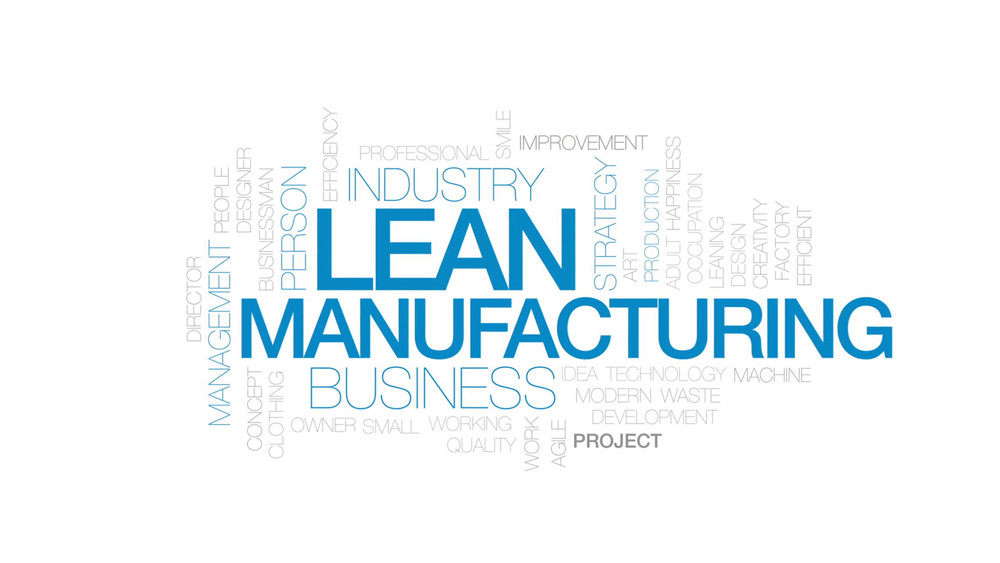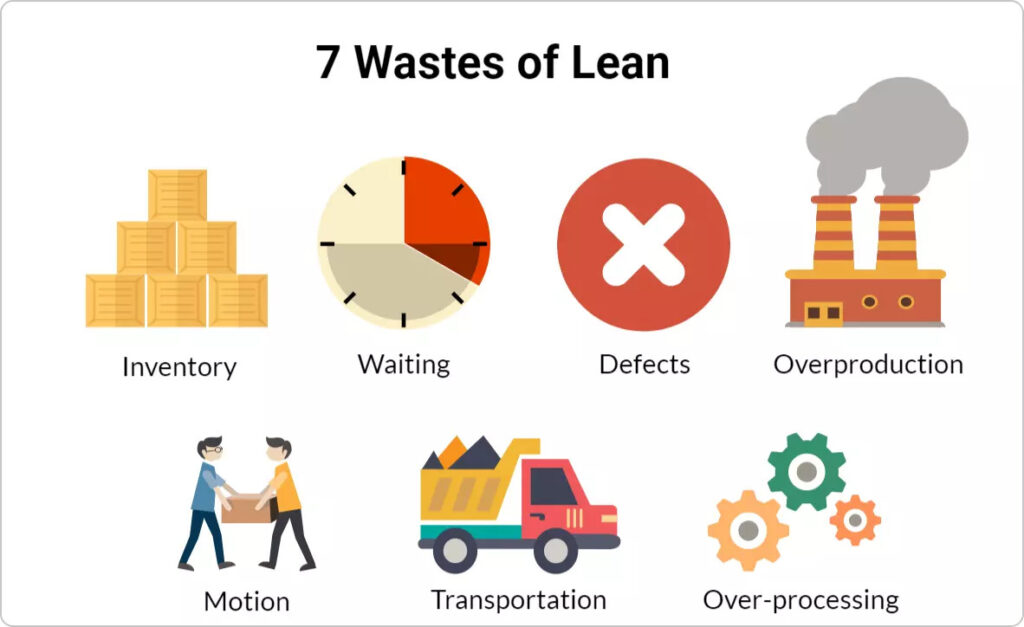Are you a garment manufacturer who wants an efficient lean production method? Want more information about Apparel Lean Manufacturing? The lean that Lean provides can bring more value to garment manufacturers. It not only saves costs and increases profits, but also brings many other values to both users and society. If you want more information about Lean Manufacturing, continue reading our sharing in this article. The information we provide will cover concepts, benefits and tools to help you implement Lean manufacturing in apparel manufacturing.
What Is Lean Manufacturing in Apparel Industry?
The Lean Manufacturing concept in the apparel industry can reduce operating costs in manufacturing
Lean Manufacturing (also known as Lean Production) is a system of tools and methods aimed at continuously eliminating all waste in the production process. Lean Manufacturing originates from the Toyota Production System (TPS) and has been gradually implemented throughout Toyota’s activities since the 1950s. Today it is applied in many different industrial production fields.

The apparel industry’s Lean Manufacturing concept can reduce manufacturing costs by eliminating process waste, empowering people with better communication, increasing productivity during execution, and transforming the organization. become a learning organization. Lean Manufacturing is a systematic approach to achieve the shortest possible cycle time by eliminating process waste through continuous improvement. Thus making the operation very efficient and involves only the end-to-end value-adding steps.
Apparel manufacturers use Lean Manufacturing to achieve the same output with less input time, less space, less human effort, less machines, less materials, low cost than. Lean is most widely used in the Apparel industry that is assembly oriented or has a large number of repetitive human processes. In apparel Lean Manufacturing, the value of a product is determined based solely on what the customer actually asks for and is willing to pay. Anything with no added value can be defined as waste. Anything that adds unnecessary time, effort or cost is considered no added value.
Types of Waste in Apparel Industry

For Lean, it is necessary to eliminate what is not profitable for the business. Accordingly, there are seven major types of waste in management and production. When applying Lean Manufacturing, controlling waste and turning that waste into profit is the goal.
Here are seven types of waste that Lean says must be eliminated:
- Overproduction
- Excess processing
- Inventory
- Rework/correct mistakes
- Wait
- Transportation
- Redundant action
Benefits of Lean Manufacturing In Garment Industry
Lean is most widely used in industries that are assembly-oriented or have repetitive worker processes. In these industries, the efficiency and attention to detail of workers when working with manual tools or operating machinery has a big impact on productivity. For the apparel industry, Apparel Lean manufacturing offers the following benefits:
Reduce waste

Reduce waste and unnecessary tangible waste, including overuse of raw materials, preventable waste, costs associated with recycling, and capital product features not requested by the customer.
Reduce inventory
Minimize inventory levels at all stages of production, especially work-in-progress between stages. Lower inventory levels mean less working capital requirements.
Increase labor productivity

Lean improves labor productivity, by both reducing workers’ idle time, and at the same time ensuring that workers are most productive during working time (do not perform tasks or tasks that do not need to be done). set).
Utilize equipment and space
Use equipment and production space more efficiently by eliminating bottlenecks and maximizing production efficiency on existing equipment while minimizing downtime.
Reduce production cost
If the company can reduce production cycles, increase labor productivity, and reduce congestion and downtime, the company can significantly increase output from its existing facilities. Most of the above benefits lead to lower production costs.
In addition, the principle of Lean is to help businesses shorten production time and delivery time, thereby saving maximum costs, bringing added value to businesses. Applying Lean technology, the stages are connected through a continuous flow; Strictly control quality at each operation and stage. Lean will help to plan and accurately calculate the stages in accordance with the production schedule, reduce raw materials and inventory, thereby saving management costs, increasing productivity and quality, and improving relationships.
Tools of Lean Manufacturing In Garment Industry

If you intend to use apparel Lean manufacturing in your garment manufacturing process, the following tools can effectively assist you. 5S, KANBAN and JUST IN TIME are all great solutions. You can learn more about them below:
5S
Elements of 5S upgrade practice were introduced into training and counseling
5S is a basic management philosophy and method to improve the working environment, a permanent program of activities in the organization. Starting from the point of view, if working in a healthy, clean and scientific environment, the spirit and body will be comfortable, and labor productivity will be improved. 5S is a very simple but highly effective improvement method in practice.
The 5S standard originates from the Japanese manufacturer Toyota and is abbreviated by 5 words: Seri (SORT), Seiton (SET IN ORDER), Seiso (STANDARDIZE), Seiketsu (SUSTAINT) and Shitsuke (SELF-DISCIPLINE).
- Series (SORT): Sort and remove unnecessary things can be sold or reused.
- Seiton (SET IN ORDER): Conduct a scientific and reasonable arrangement of products according to the criteria of easy to find, easy to see, easy to get, easy to return.
- Seiso (STANDARDIZE): The warehouse space is regularly cleaned and organized with regularly maintained and neatly arranged items.
- Seiketsu (SUSTAINT): Always check, maintain the 3S standard above.
- Shitsuke (SELF-DISCIPLINE): Train, create a habit, order, and style for everyone in the enterprise to implement 5S.
Implementing the 5S process will solve the problems of improving labor productivity and quality through activities that eliminate waste from input materials to minimize redundant operations. for production to help production take place continuously, without interruption – that is also a content in LEAN.
In summary, elements of 5S upgrade practice were introduced into training and counseling to replace the traditional 5S perspective. And those upgraded 5S standards are aimed at LEAN to improve efficiency and productivity, helping businesses develop sustainably.
KANBAN
Kanban in Japanese Kanban means “Information Board”. Namely Kan is the card, Ban is the signal. A board that uses cards to record signals, also known as a signal pull system. It controls what is produced, in what quantities and when. The goal is to make sure that you produce only what the customer requires and neither over nor under. It’s a signaling system used through the value stream to pull products from customer demand back into the raw materials and components you need to produce.
Push production process
The plan is made, then the materials and semi-finished products are continuously pushed to the next stage to form the finished product and all the process is controlled based on prediction or MRP (Material Requirements Planning). This often creates inventory in stages (when the former is faster than the latter) or products in large quantities, leading to inventory taking up space, easily causing product damage and waste.
Scissors production process
When a customer picks up a product from the end of the production process, a signal is sent back to the line to trigger the production of the next component or product. Just like a supermarket will fill every empty shelf by ordering the right product and quantity it needs from the previous stage.
Kanban is based on actual customer orders. The principle of Kanban is to only produce what is required, not to do more. Kanban is considered a central element in LEAN production and is widely adopted. Implementation of Kanban means that the previous stage only does what the next stage requires and only produces according to the customer’s requirements. Thereby will avoid the waste due to inventory and overproduction.
JUST IN TIME (JIT)

JUST IN TIME is a concept in modern manufacturing. It is applied in many different manufacturing industries including apparel. The brief summary of this manufacturing process is: Right product – Right quantity – At the right place – at the right time. As part of Lean, all processes that do not create value in the production or service provision in apparel will be abolished. The system will only produce what the customer wants or has ordered.
The source of raw materials, goods and products used in the production and distribution of JUST IN TIME are planned in detail for each step. Subsequent processes will be set up to bring real value and terminate immediately when not needed.
This lean manufacturing approach will focus solely on customer satisfaction and internal efficiency. That eliminates all the waste in conventional production lines.
Conclusion
Applying apparel Lean manufacturing in manufacturing can really do great things for both the manufacturer and the customer. Everything is minimized that can bring maximum value while avoiding risks. Hopefully, the information we share here can help you!


